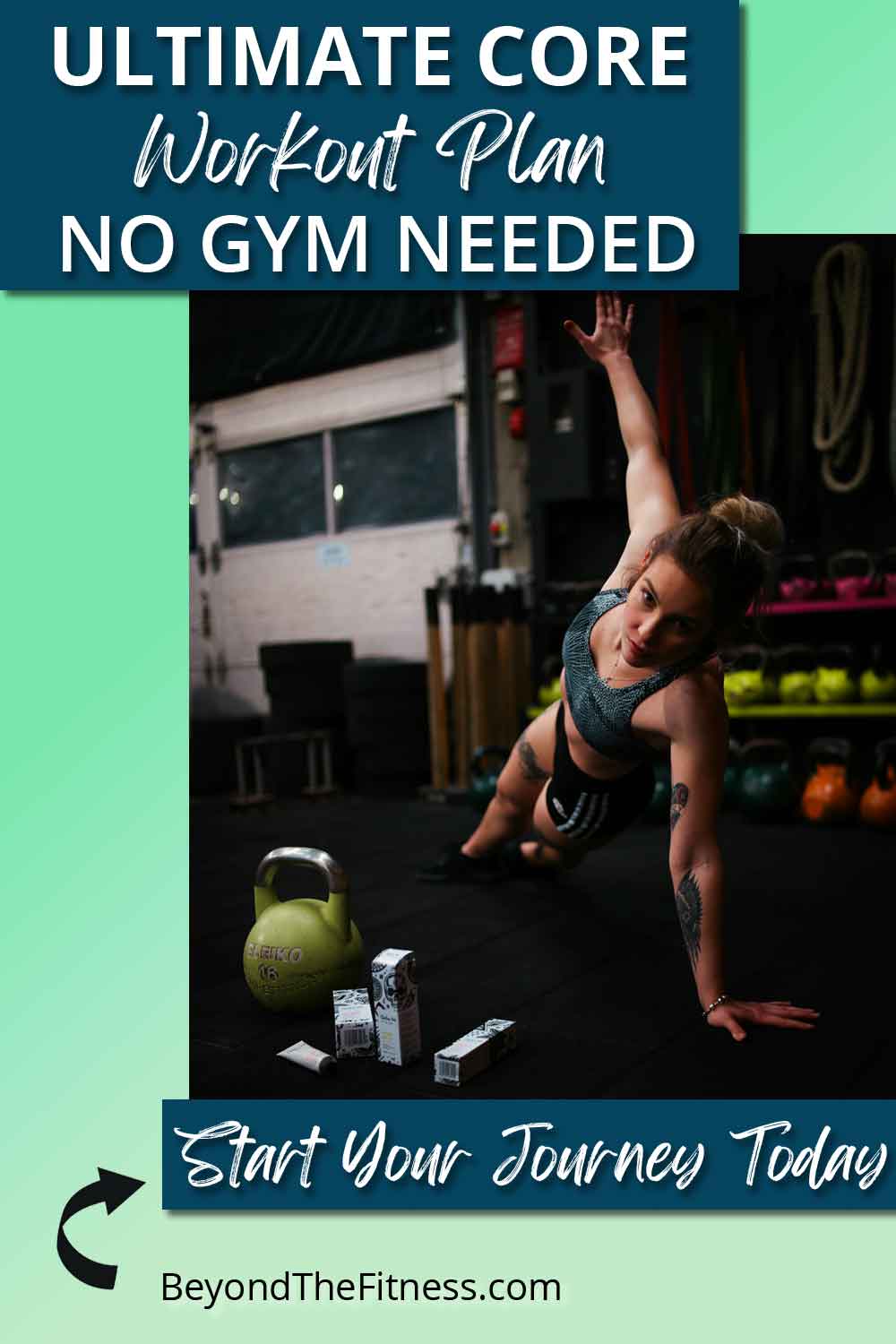When it comes to building a strong, stable core, I believe it’s more than just about getting abs that look great. A solid core exercise helps with everyday movements, keeps your balance in check, and supports your overall fitness journey. Whether you’re just starting out or already crushing advanced workouts, I’ve got some awesome core exercises to share with you.
Let’s dive into the best moves that can help you target your core, no matter your fitness level.
What Is Your Core, and Why Does It Matter?
Your core isn’t just about your abs. It includes your stomach muscles, lower back, hips, and even your pelvic muscles. These muscles work together to keep you strong and steady. A strong core helps with posture, balance, and even breathing better. Plus, it makes workouts like running, lifting, and yoga feel smoother.
If you’ve ever struggled with back pain or felt wobbly doing a workout, focusing on your core can help fix that. And don’t worry—it’s never too late to start.
Core Workout Basics for Beginners
When you’re new to working out your core, it’s all about building a solid foundation. You don’t need fancy equipment. Just some floor space, a mat, and your body weight can do wonders.
1. Plank Hold
- How to do it: Start on your hands and knees. Step your feet back and straighten your legs so your body forms a straight line. Keep your hands under your shoulders and your core tight.
- Why I love it: It’s simple but powerful. You’ll feel your stomach, back, and even your arms working.
- Time: Hold for 20–30 seconds if you’re just starting out.
2. Bird Dog
- How to do it: Begin on your hands and knees. Reach your right arm forward and your left leg back, keeping both straight. Return to the starting position and switch sides.
- Why it’s great: This move is gentle but super effective for balance and core control.
- Reps: Try 8–10 on each side.
3. Dead Bug
- How to do it: Lie on your back with your arms pointing up and your knees bent at 90 degrees. Lower your right arm and left leg toward the floor, then bring them back. Switch sides.
- Why it helps: It keeps your core engaged without putting strain on your back.
- Reps: Start with 8–10 per side.
Intermediate Core Workouts to Build Strength
When you’re ready for a challenge, these moves will take things up a notch.
1. Side Plank
- How to do it: Lie on your side with your legs straight. Prop yourself up on your forearm, keeping your body in a straight line. Lift your hips off the ground.
- What it works: This targets your obliques (the sides of your core) and improves balance.
- Time: Hold for 20–40 seconds per side.
2. Russian Twists
- How to do it: Sit on the ground with your knees bent and feet flat. Lean back slightly and clasp your hands together. Twist your torso to the right, then to the left.
- Why it’s fun: You’ll feel the burn in your obliques, and you can add a weight if you’re feeling strong.
- Reps: Aim for 12–15 twists per side.
3. Leg Raises
- How to do it: Lie flat on your back with your legs straight. Slowly lift your legs toward the ceiling, keeping them together. Lower them back down without touching the ground.
- Why it works: This strengthens your lower abs like nothing else.
- Reps: Start with 10–12.
Advanced Core Exercises for Serious Strength
If you’ve been working out your core and feel like a pro, these moves will push your limits.
1. Hanging Knee Raises
- How to do it: Hang from a pull-up bar with your arms straight. Pull your knees up toward your chest, then lower them slowly.
- Why I recommend it: It’s a killer workout for your entire core.
- Reps: Try 8–10 to start.
2. Ab Rollouts
- How to do it: Use an ab wheel or a barbell. Kneel on the ground and hold the wheel or bar. Roll forward slowly, keeping your core tight, and then roll back.
- Why it’s tough: It works your abs, shoulders, and back in one move.
- Reps: Begin with 5–8.
3. Dragon Flags
- How to do it: Lie on a bench and hold onto the sides for support. Lift your body up, keeping your legs straight, and slowly lower yourself back down.
- Why it’s advanced: This is for those who want an intense core workout.
- Reps: Try 5–6 with good form.
How to Add Core Workouts to Your Routine
To get the most out of these exercises, I like to mix them into my weekly workout plan. You don’t have to spend hours working out your core. Just 10–15 minutes, 3–4 times a week, can make a big difference.
Here’s a quick sample plan:
- Day 1: Beginner moves (Plank Hold, Bird Dog, Dead Bug)
- Day 3: Intermediate moves (Side Plank, Russian Twists, Leg Raises)
- Day 5: Advanced moves (Hanging Knee Raises, Ab Rollouts, Dragon Flags)
Remember, the key is consistency. Start with what feels manageable and gradually build from there.
Why Core Workouts Are Essential
Your core isn’t just about aesthetic goals like toned abs; it’s an essential part of your overall fitness. Think about it: Every time you move—whether it’s standing, walking, running, or lifting—you’re using your core. A strong core helps you stabilize your body and maintain proper posture. Plus, it supports your spine, preventing back injuries and improving your overall health.
If you’ve been neglecting your core workouts, it’s time to rethink your fitness routine. Strengthening your core can help you with everything from lifting heavier weights in the gym to reducing the risk of falls as you age. It’s a game changer!
The Benefits of a Strong Core
A strong core offers a lot of perks beyond looking great in a swimsuit. Let’s break it down.
1. Improved Posture
Your core plays a major role in supporting your spine, and good posture starts with strong muscles around the torso. When your core muscles are weak, you’re more likely to slouch or hunch over. But when you consistently work your core, you’ll notice you stand taller and feel more confident.
2. Increased Balance and Stability
Core training is all about building balance and stability. Whether you’re performing squats or simply walking, your core helps you stay steady. Strong core muscles help you move more efficiently and maintain proper form during exercises, which reduces the risk of injury.
3. Better Performance in Sports
Athletes across all sports rely on their core for power, agility, and endurance. From running to cycling, swimming, and even dancing, your core is involved in almost every movement. Building a powerful core gives you an advantage whether you’re working out at the gym or engaging in other physical activities.
4. Enhanced Flexibility
Your core muscles, when trained regularly, allow you to improve your flexibility. Moves like yoga and pilates rely heavily on core strength to control movement, increase range of motion, and promote long-term joint health.
5. Reduced Back Pain
Back pain is one of the most common complaints for many people, especially those who sit for long periods or don’t maintain proper posture. A strong core supports your lower back and helps reduce the risk of injury. Regular core exercises strengthen your abdominal muscles, which in turn support the spine.
How to Progress Your Core Workouts
Now that we’ve covered the importance of core strength, let’s discuss how to progress your workouts. As with any fitness routine, you’ll want to gradually challenge your body to keep making progress. Here’s how to do it:
You Might Be Interested In: Learning more about The Complete Smoothie Detox & Weight Loss Program
1. Increase Time or Reps
When you start a new core exercise, it’s tempting to focus solely on the number of sets and reps. But as your core gets stronger, consider increasing the duration of each set or adding more reps. For example, if you can comfortably hold a plank for 30 seconds, try increasing the time to 45 seconds or even 1 minute. This is a simple way to ramp up the intensity and build endurance.
2. Add Resistance
To make your core workouts even more challenging, you can add resistance through weights or resistance bands. For example, in exercises like Russian twists, you can hold a medicine ball or a dumbbell to increase resistance. Or for leg raises, you can add an ankle weight. Adding resistance forces your muscles to work harder, which means greater strength gains.
3. Incorporate More Dynamic Movements
Once your core is strong enough to handle static holds like the plank, it’s time to add more dynamic movements. This means adding movements that engage your core in new ways. For instance, you could do mountain climbers instead of holding a standard plank, or you could add knee-to-chest pulses during leg raises to add more intensity and challenge your body in different ways.
4. Progress to Advanced Variations
If you’re consistently performing intermediate-level moves, it might be time to take things to the next level. Exercises like hanging leg raises, dragon flags, and ab rollouts require a great deal of strength and control. If you feel confident in your intermediate-level exercises, try gradually progressing to these more advanced variations to further challenge your core.
Core Workout Variations for Greater Engagement
Sometimes, it’s good to switch things up to keep your workouts fresh and prevent plateaus. Here are a few variations of core exercises that can help you target different parts of your body and maintain engagement.
1. Stir the Pot
This exercise is done on a stability ball, and it’s fantastic for working the entire core. To do it, position yourself with your forearms on the ball and your knees on the ground. Slowly move your arms in a circular motion, like you’re stirring a pot. This forces your core to engage as it stabilizes your body.
2. V-ups
This advanced move is a combination of a sit-up and a leg raise. Lie on your back with your arms extended overhead and legs straight. At the same time, lift your upper body and your legs to form a “V” shape, then return to the starting position. This is a great exercise for targeting the entire core, especially the lower abs.
3. Cable Woodchoppers
This dynamic movement uses a cable machine to rotate your torso and engage your obliques. To do this move, attach a handle to a high pulley, grab it with both hands, and pull it diagonally across your body, from high to low. This simulates a chopping motion and works the core in a functional, real-world way.
Tips for Effective Core Training
It’s easy to get caught up in doing core exercises over and over, but remember, like any muscle group, your core needs rest to recover and grow. Here are a few additional tips for getting the best results:
1. Consistency is Key
I can’t stress this enough: Core workouts require consistency. Don’t expect to see results after one or two sessions. You need to make core training a regular part of your routine. Aim to do core exercises at least 2–3 times a week.
2. Work on Core Stability
While crunches and sit-ups are popular, they’re not always the best exercises for building true core strength. Focus on stability exercises like planks, side planks, and bird dogs that require you to engage your entire core to hold your position. These exercises develop better stability, which is key for functional fitness and injury prevention.
3. Mind-Muscle Connection
When doing core exercises, it’s essential to focus on engaging the muscles you’re targeting. It can be easy to rush through the movements, but try to slow down and feel the muscles in your core working. This mind-muscle connection helps maximize the effectiveness of each exercise and ensures you’re targeting the right areas.
4. Don’t Forget to Breathe
Many people tend to hold their breath during core exercises, especially when it gets tough. However, breathing is crucial to maintaining proper form and getting the most out of your workouts. Remember to breathe out during the exertion phase of the exercise (when you’re engaging your core), and breathe in during the relaxation phase.
Fueling Your Core Workouts
The best core workouts go hand in hand with proper nutrition. If you want to see results, it’s not just about working out; it’s also about eating the right foods to fuel your body and help you recover.
1. Protein is Key
To build muscle, you need adequate protein. Lean protein sources like chicken, turkey, fish, eggs, and plant-based options like tofu or beans will support muscle repair and growth. Try to include protein in every meal to ensure your body has the nutrients it needs to recover from your core workouts.
2. Stay Hydrated
Drinking water is crucial for overall health, but it’s especially important when you’re working out regularly. Hydration helps your muscles recover faster and reduces fatigue. Aim to drink water before, during, and after your core workouts to stay energized and support your fitness goals.
3. Focus on Whole Foods
Processed foods won’t fuel your body the same way that whole, nutrient-dense foods will. Focus on a balanced diet that includes vegetables, fruits, whole grains, healthy fats, and lean proteins. These foods give your body the energy it needs to perform your best during workouts and recover effectively afterward.
With a strong and well-rounded core, you’ll notice improvements in your posture, balance, and overall fitness. Whether you’re just starting out or you’re looking to level up your training, these core exercises can help you build a foundation for success. Stick with it, progress at your own pace, and before you know it, you’ll have a strong, stable core that supports you in every move you make. Happy training!
Final Tips for Success
- Focus on form: It’s better to do fewer reps correctly than many reps with poor form.
- Listen to your body: If something feels off or painful, take a break or modify the move.
- Pair with cardio: Cardio helps burn fat so your strong core can shine through.
- Eat smart: A balanced diet with lean protein, veggies, and healthy fats supports your fitness goals.
Your core is the center of everything you do, and I’m here to tell you that building it up is worth it. Whether you’re a beginner or a seasoned pro, these exercises can help you feel stronger, steadier, and ready for anything life throws your way. Let’s get moving!







